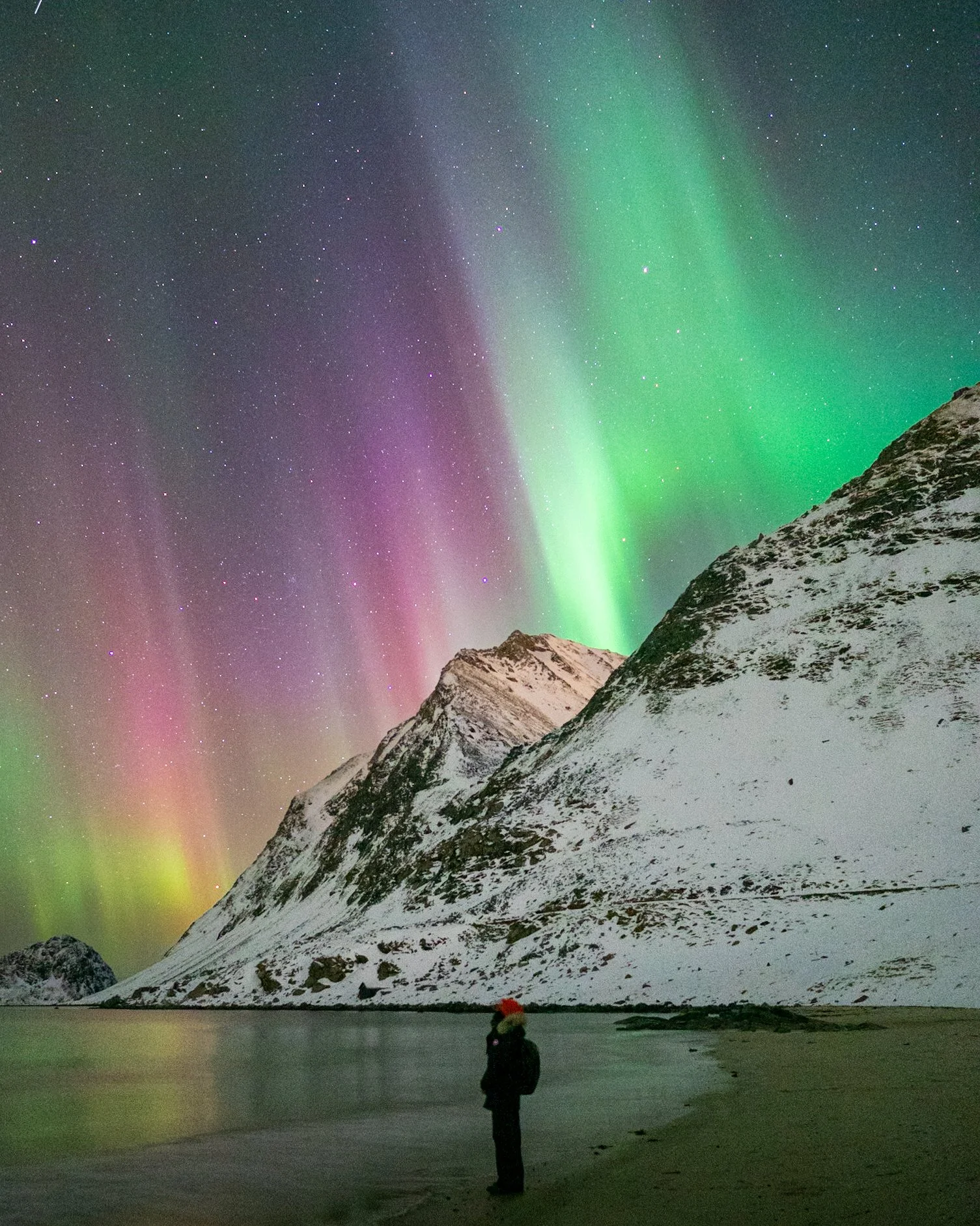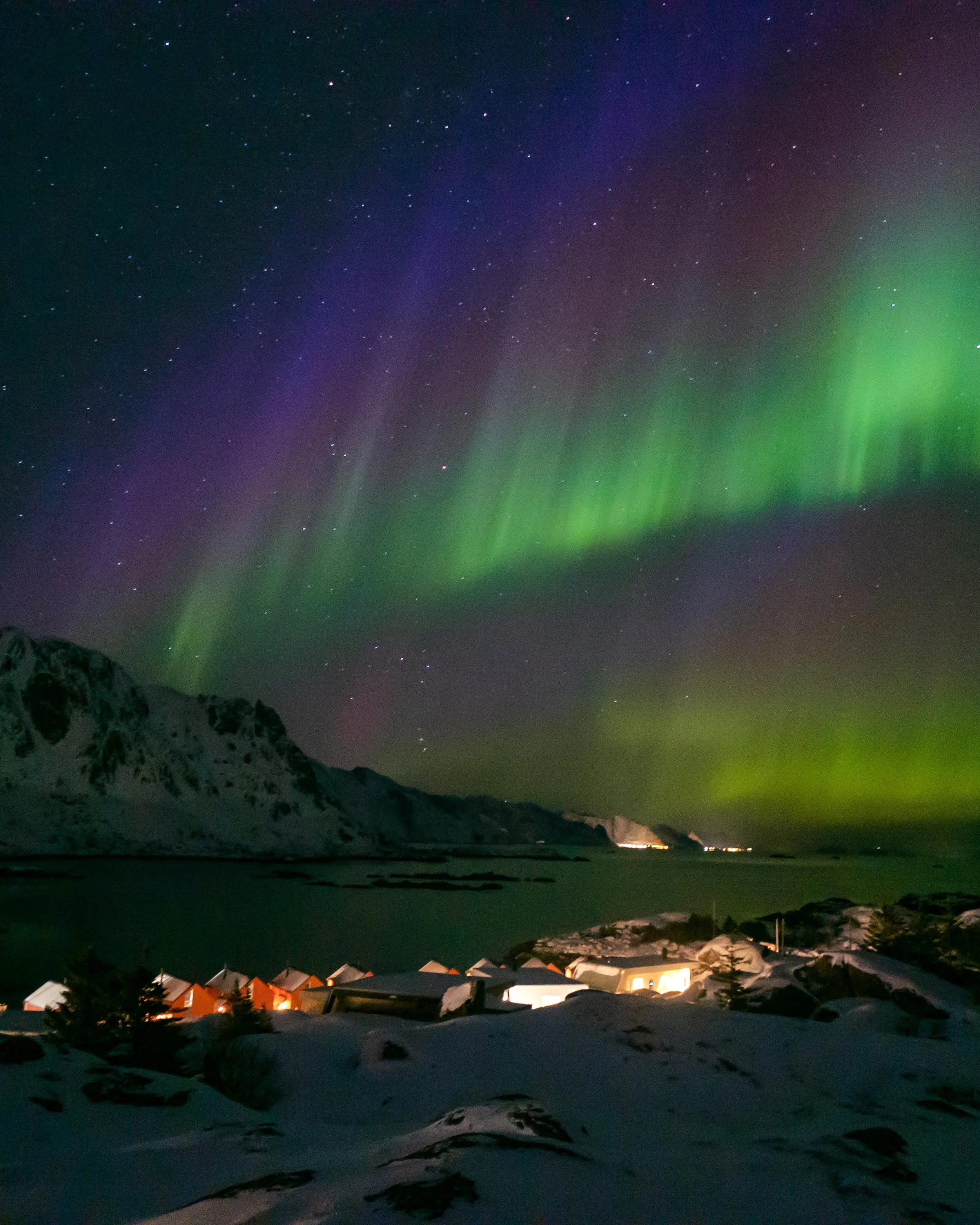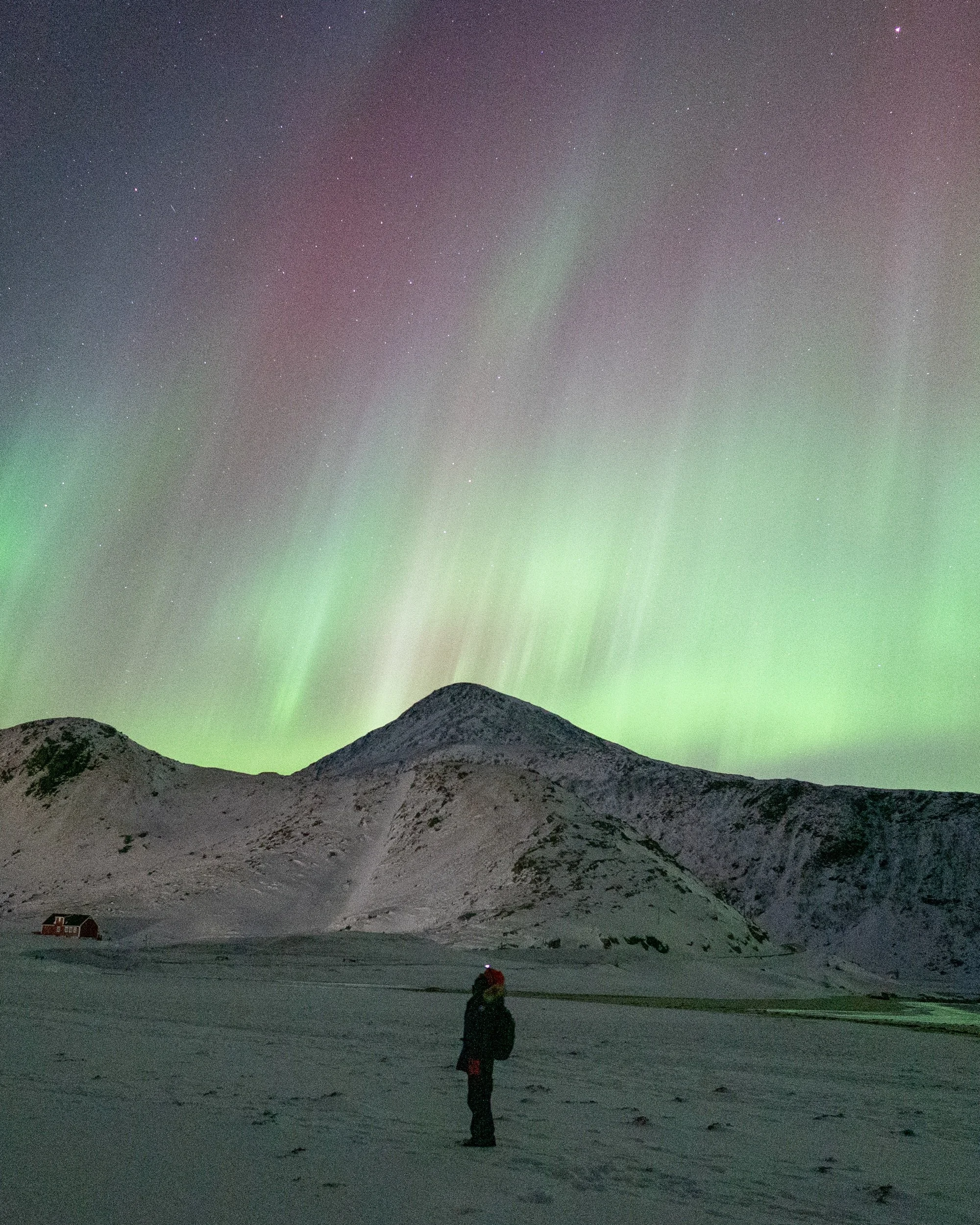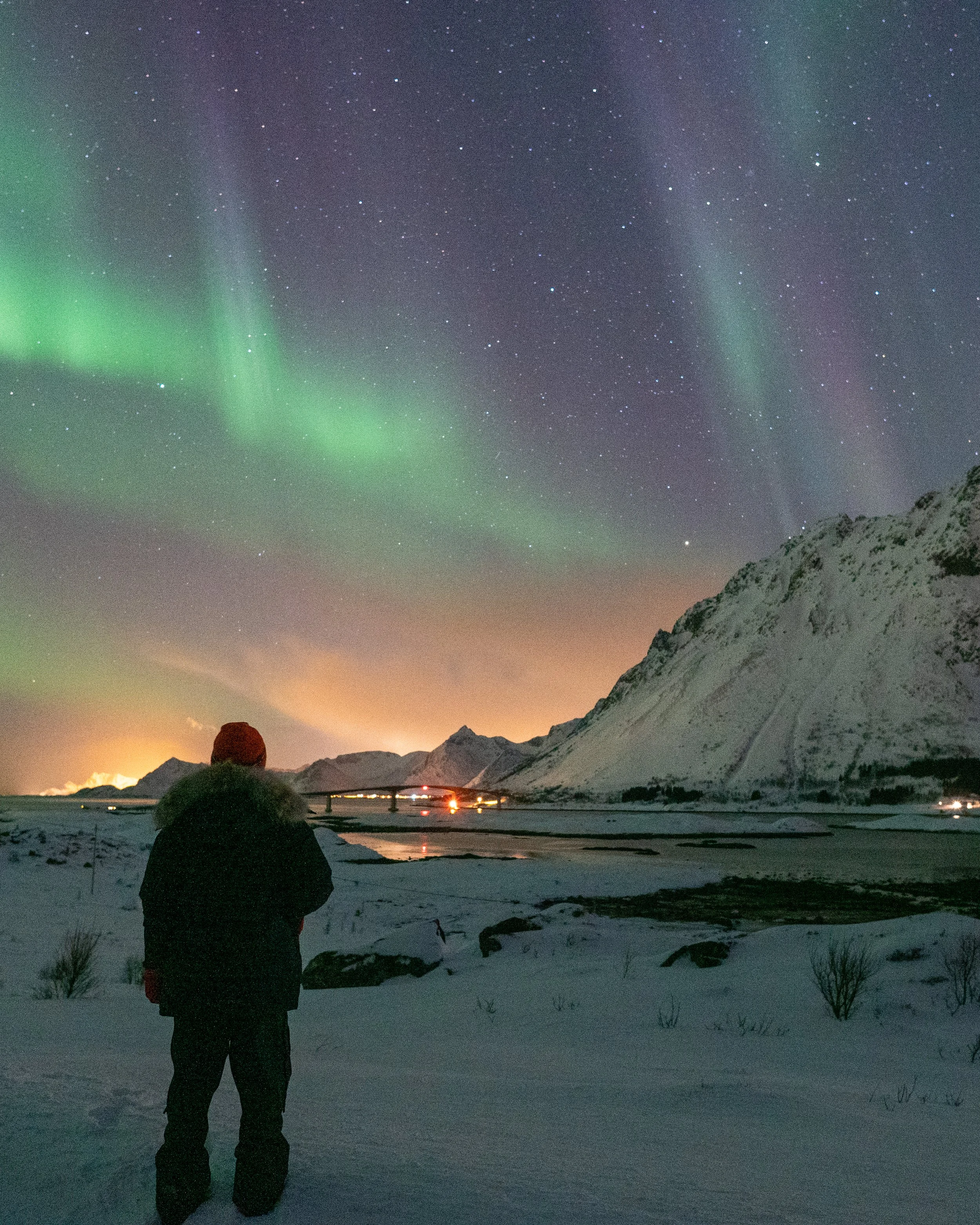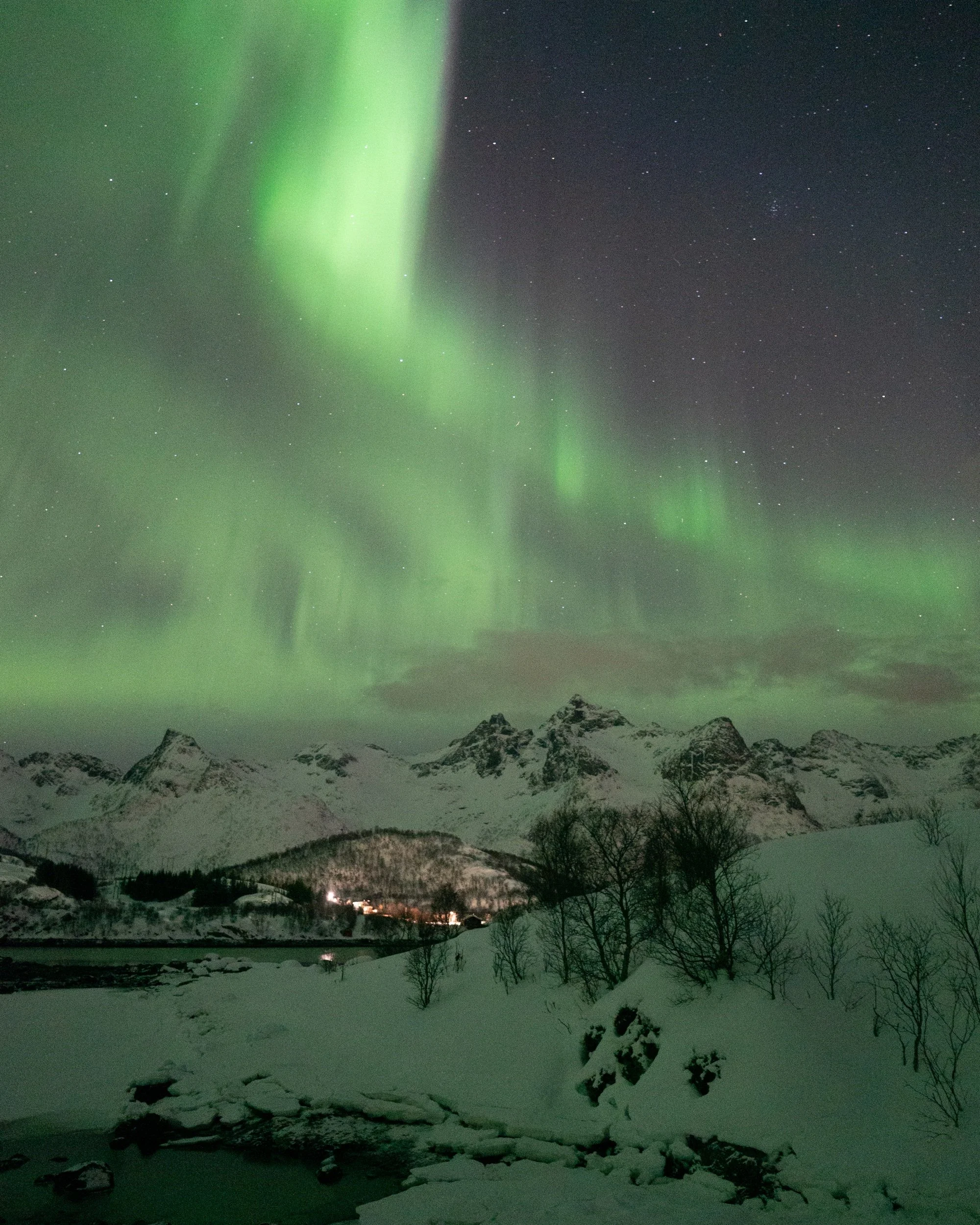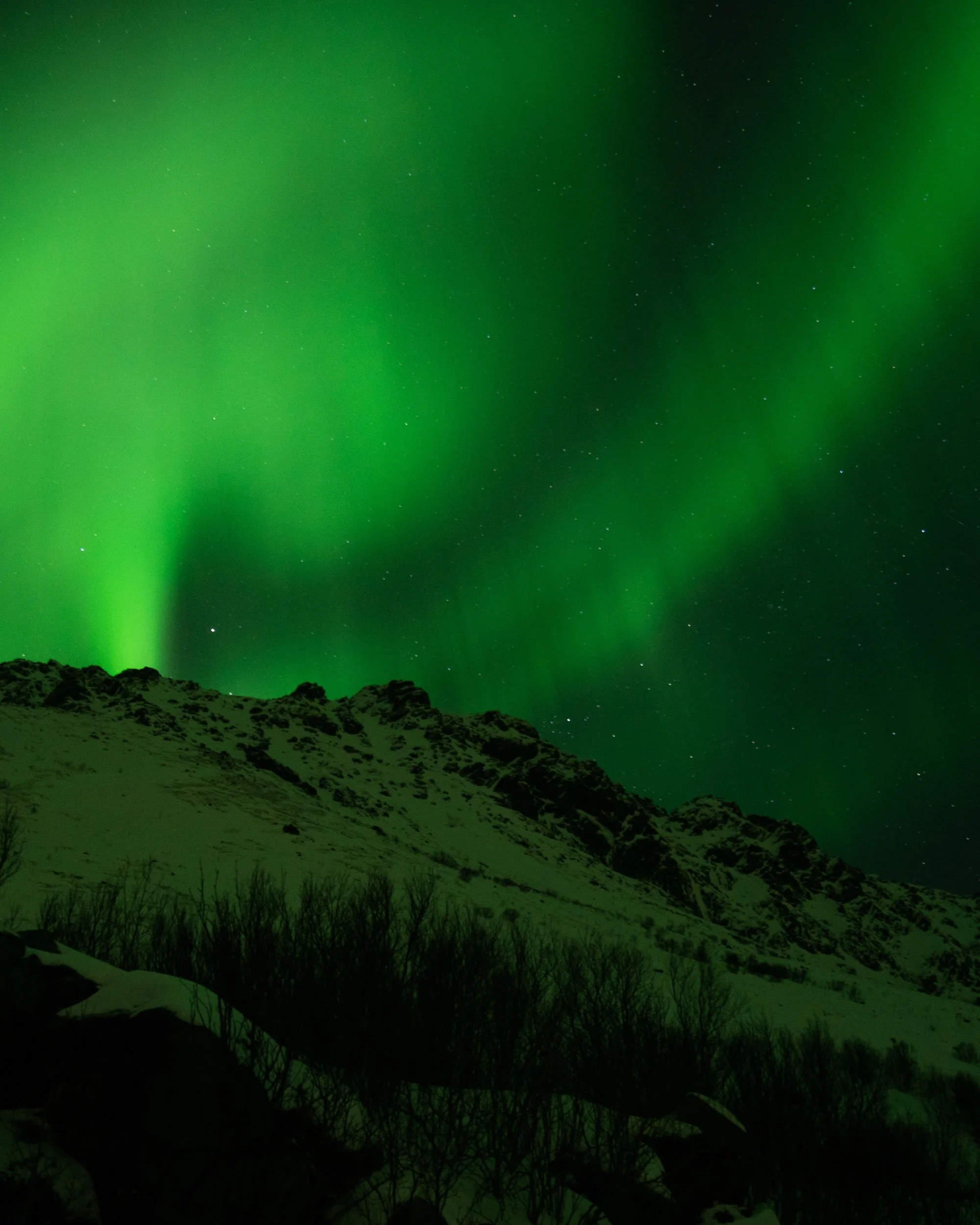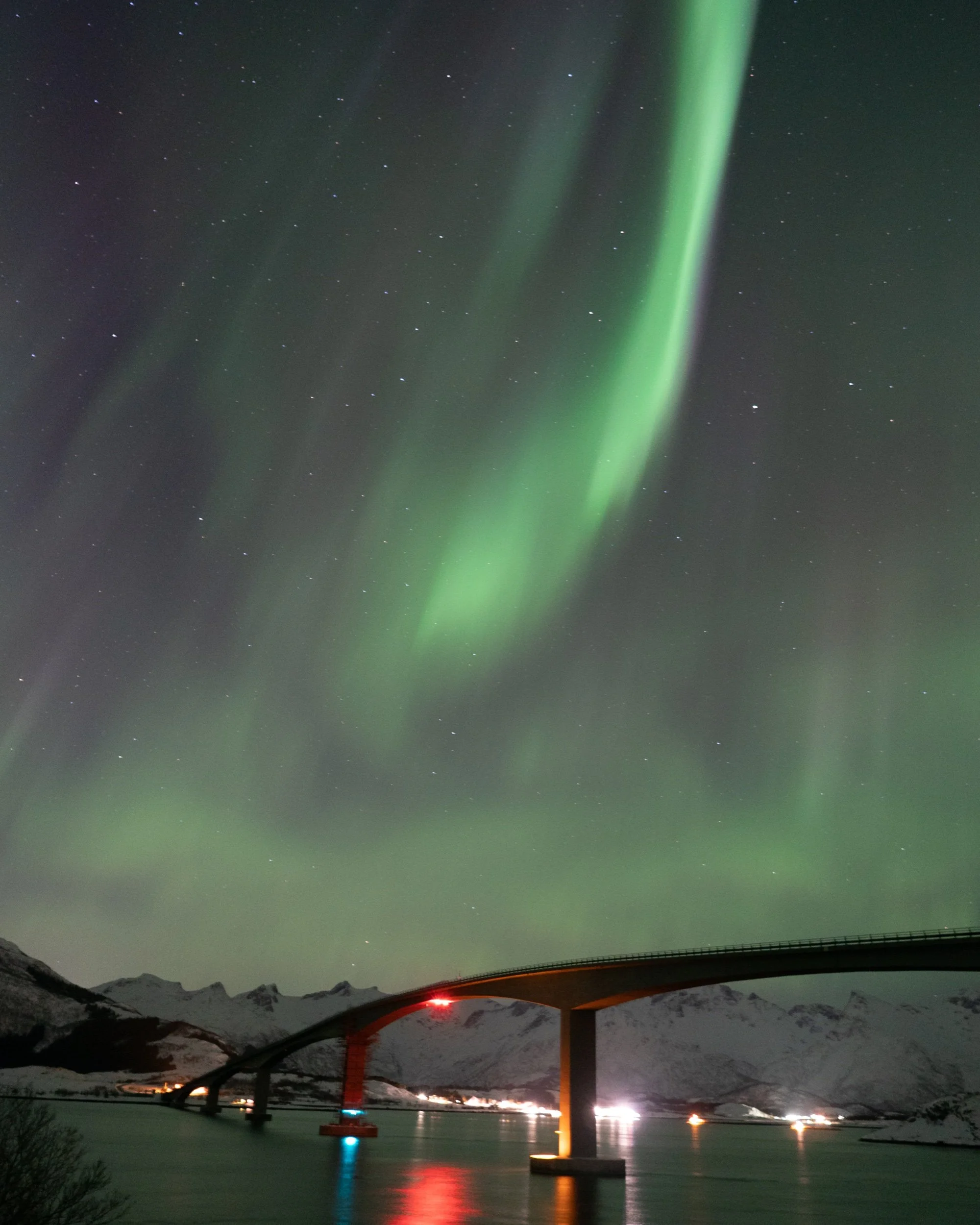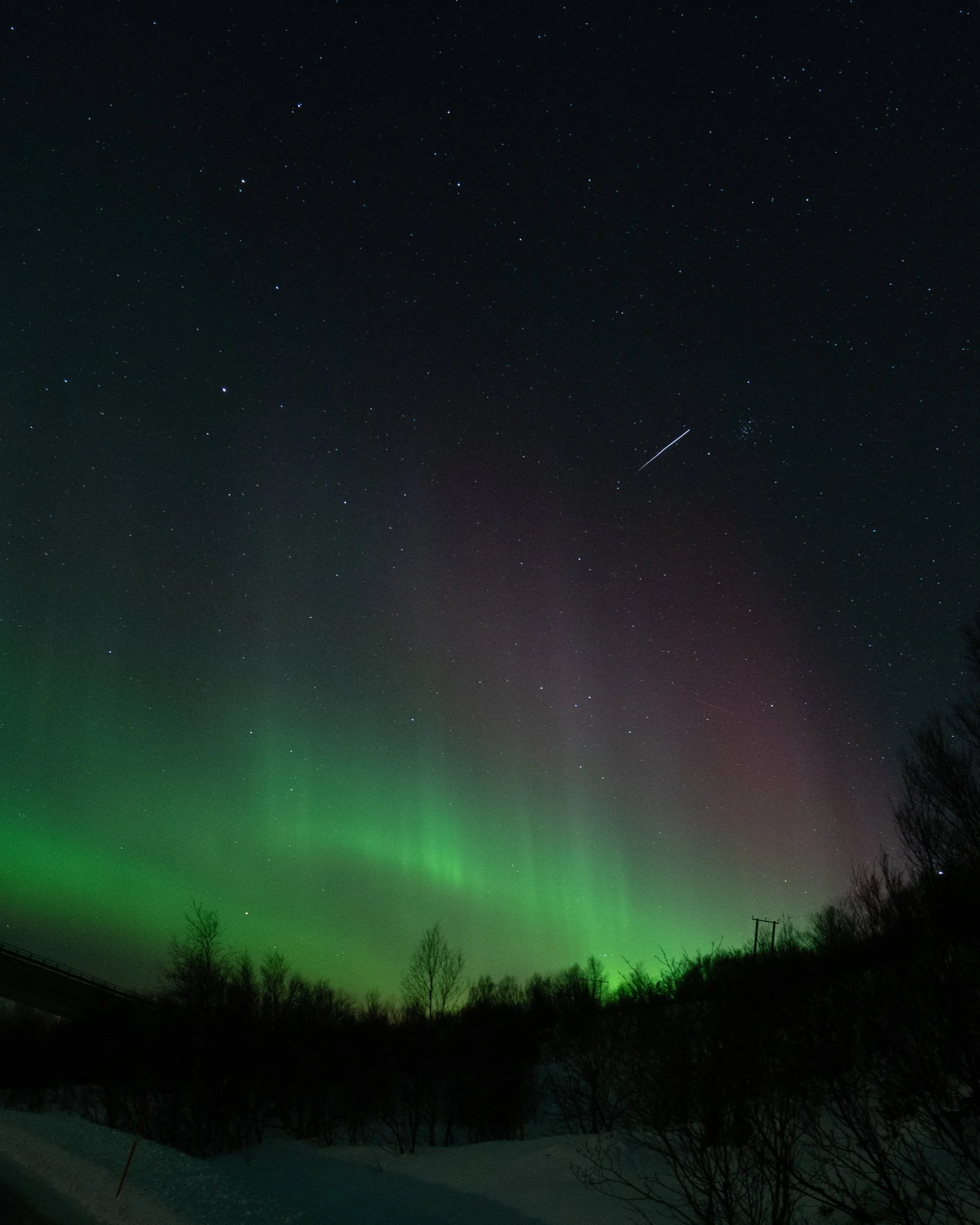CHASING THE NORTHERN LIGHTS IN LOFOTEN ISLANDS, NORWAY
MAGIC OF THE NORTHERN LIGHTS -
When trying to catch the northern lights, it comes down to two things, luck and patience. During the 7 days we spent in Norway, we saw the northern lights for 2 days. If you are planning on trying to catch the aurora, scheduling for at least a week would give you the best chances. There are three things that give an edge, (1) a high KP index (you can check it online), (2) good weather (clear skies without clouds), (3) finding an open area facing the north. We finally caught the lights on our last two nights in Ballstad!
START IN BALLSTAD
The town of Ballstad is a perfect spot to use as a homebase. It is a close drive to several optimal viewing locations. Hauklandstranda Beach was one of our favorite beaches. It is perfect for photography because you can capture the aurora against the snow capped mountains and the ocean. Needless to say, we spent a majority of our time at Hauklandstranda. If Hauklandstranda is too busy, some other nearby beaches that were also accessible were Vik Beach, Uttakleiv Beach, and Skagsanden Beach.
A TOUR FROM SVOLVAER (SVOLVÆR)
On our second night, we decided to go on a tour. If you want a low effort high reward, I would highly recommend this option. We were pretty exhausted from driving all night, so this was a great choice. If you google aurora borealis tours in Lofoten Islands, you’ll get dozens of options. The good news is, many will tell you if there is a high KP index the day you want to go out. We went with Pukka Travels. They were the most responsive, and highly organized. Our tour left from Svolvær, which is a larger city than Ballstad. Within 30 minutes, we were enjoying the aurora.
CAPTURING THE AURORA
If you are into photographing the aurora, shooting with a mirrorless camera with an interchangeable lens will give you lots more flexibility. I personally shot with a Sony a6300 body, and Sony E 15mm F 1.4 G. Essentially, you’ll need a wide angle lens, with low aperture to give you a good advantage.
WHEN TO GO
The aurora season in the Lofoten Islands typically runs from November to March. Although, our guide said it could be seen as early as September and as early as April. January is probably the best month to catch the aurora, as there is almost no daylight for 24 hours. We chose March, because temperatures were warmer, and there was daylight to enjoy. There are endless possibilities while chasing the lights, part of the fun is the hope, relax and enjoy!

